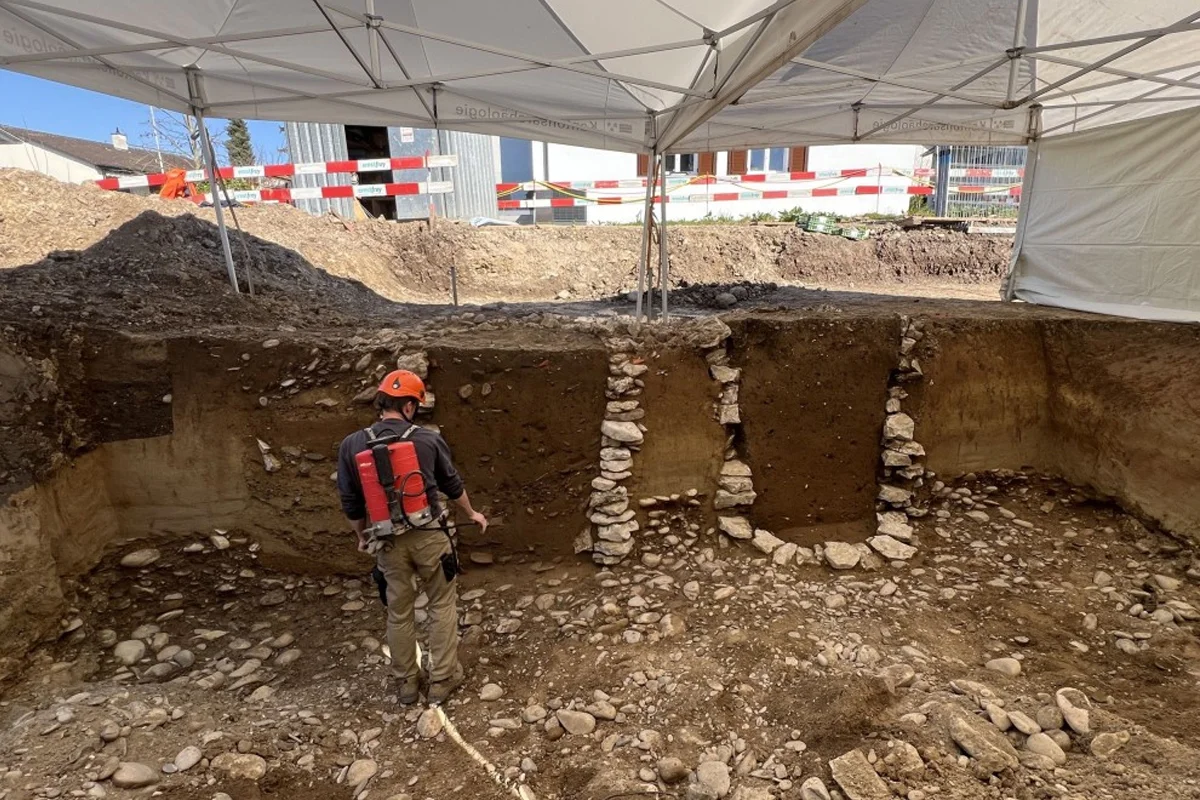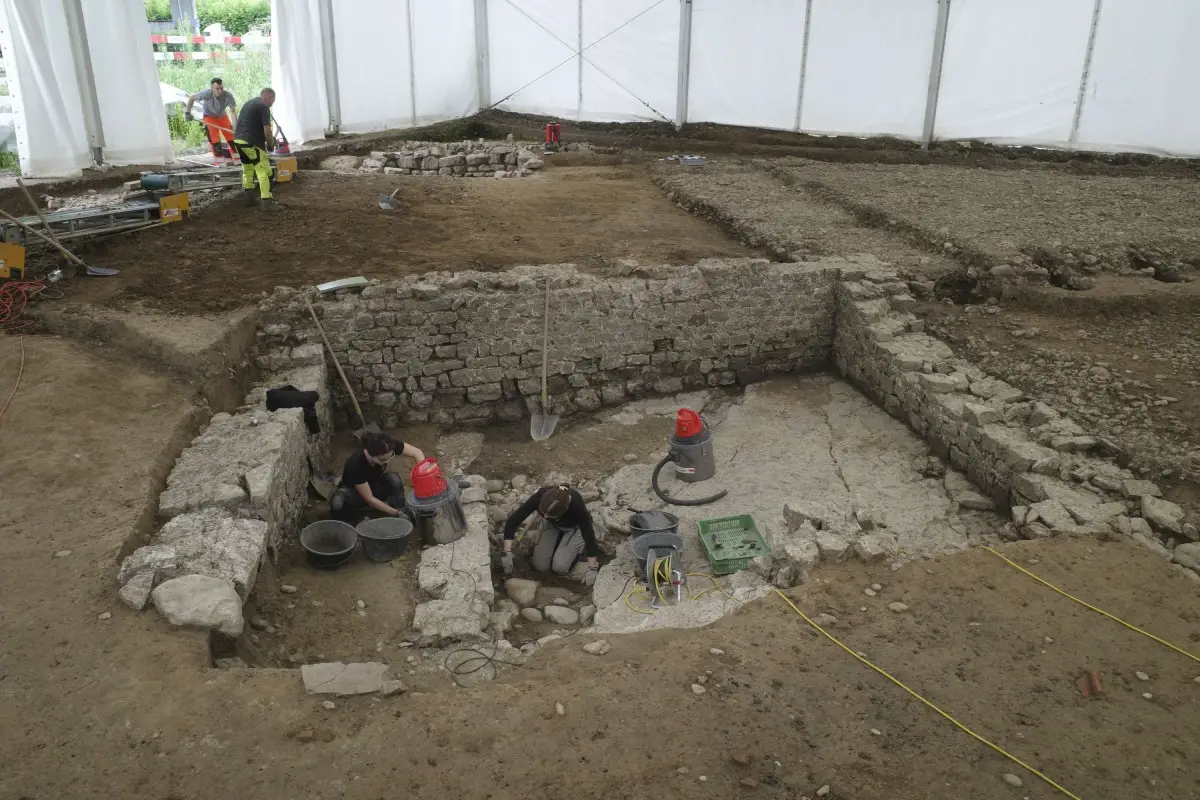In advance of construction works in the “Schürmatt” district of Kaiseraugst, archaeologists have unearthed significant Roman remains in the former settlement of Augusta Raurica.
Augusta Raurica, formerly Rauracorum, was a colonia founded around the mid-1st century BC in the vicinity of a local Gallic tribe, the Rauraci. At its peak during the 2nd century AD, the city was a prosperous trading centre and an administrative capital for the region.
Previous excavations have identified many major public buildings, including an amphitheatre, a forum, several temples, public baths, and the largest known Roman theatre north of the Alps.
In a groundbreaking study for the Aargau Cantonal Archaeology Department, the latest excavations have used digital documentation methods for the first time and explored an area of over 1,800 square metres.
According to a press statement issued by the Canton of Aargau, archaeologists have unearthed sections of a Roman road, along with adjacent buildings and courtyards.

A cross-section of the road reveals that it was resurfaced multiple times in antiquity, measures four metres in width, and is flanked by drainage ditches and covered walkways (porticoes).
The adjacent buildings are interpreted as narrow “strip houses” – charaterised by rectangular plots with rear courtyards, while some building plots had simpler wooden post-built structures.
Several infant burials were also uncovered both within the homes and their couryards. This aligns with known Roman practices, where infants were often buried close to domestic spaces, a testament to both cultural norms and the era’s high infant mortality.
“Development of this quarter began at the end of the 1st century AD and ended during the 3rd century AD. The area’s use in late antiquity is documented primarily by numerous late Roman coins and individual finds. Among the numerous finds were several special objects: a small bronze panther statuette, a tuff votive holder, and a mosaic glass spindle whorl,” said the Canton of Aargau.
Header Image Credit : Canton of Aargau
Sources : Canton of Aargau





